Hampton Roads residents were asked two questions focused on satisfaction with and trust in the police. About three-quarters (76.9%) of respondents indicated that they were either very (22.3%) or somewhat (54.6%) satisfied with the local police. Trust in the police was slightly higher with 79.8% of respondents trusting the police either a great deal (32.3%) or somewhat (46.5%).
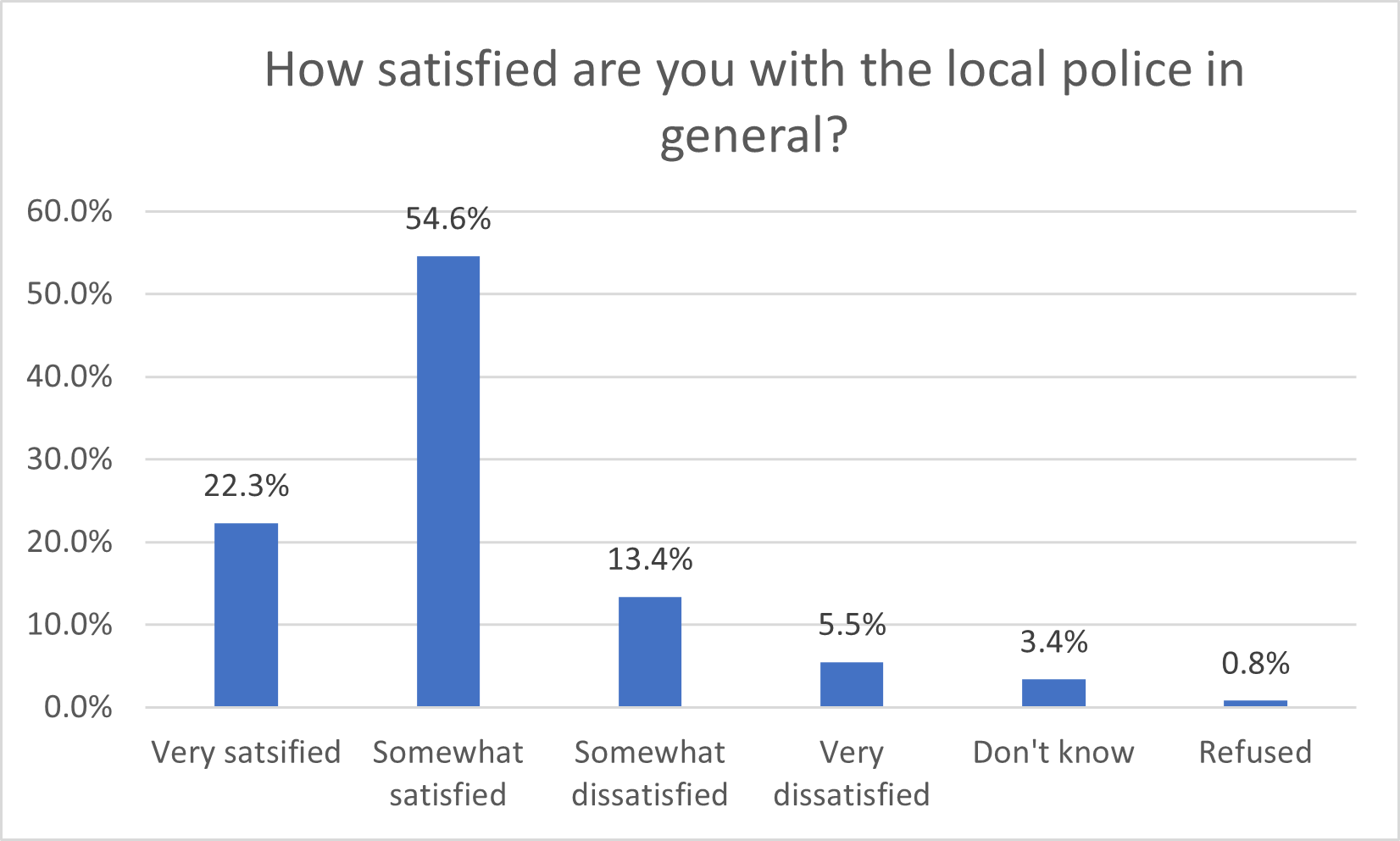
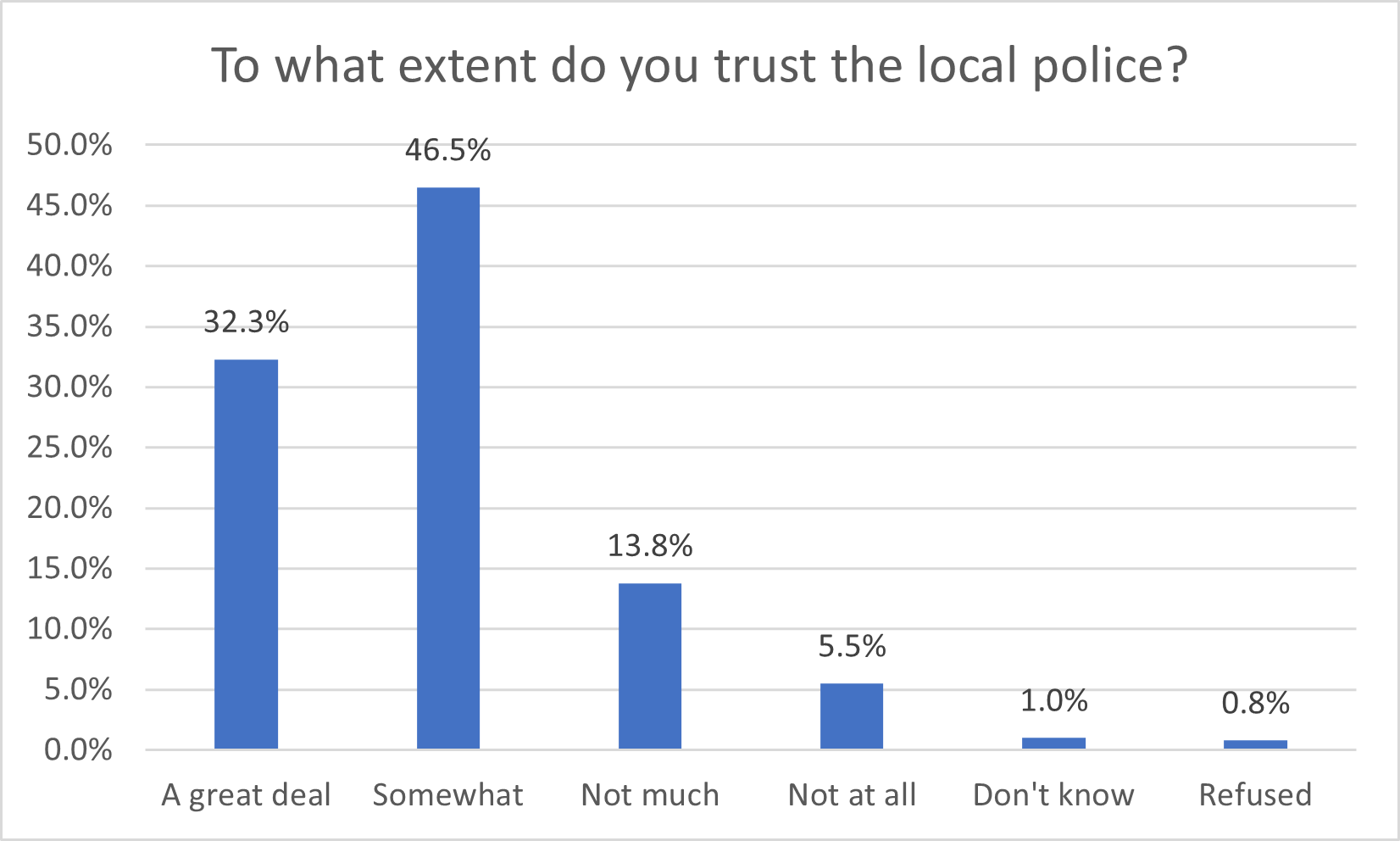
These questions were also asked in previous years. Looking over time1, trust is consistently higher than satisfaction and it appears that overall perceptions of the police have become more positive in the last few years. Note that these trends follow some highly publicized events in the early 2020s (e.g., the deaths of Michael Brown, Walter Scott, Breonna Taylor and George Floyd), anti-police protests, the Black Lives Matter movement, and efforts to defund the police.
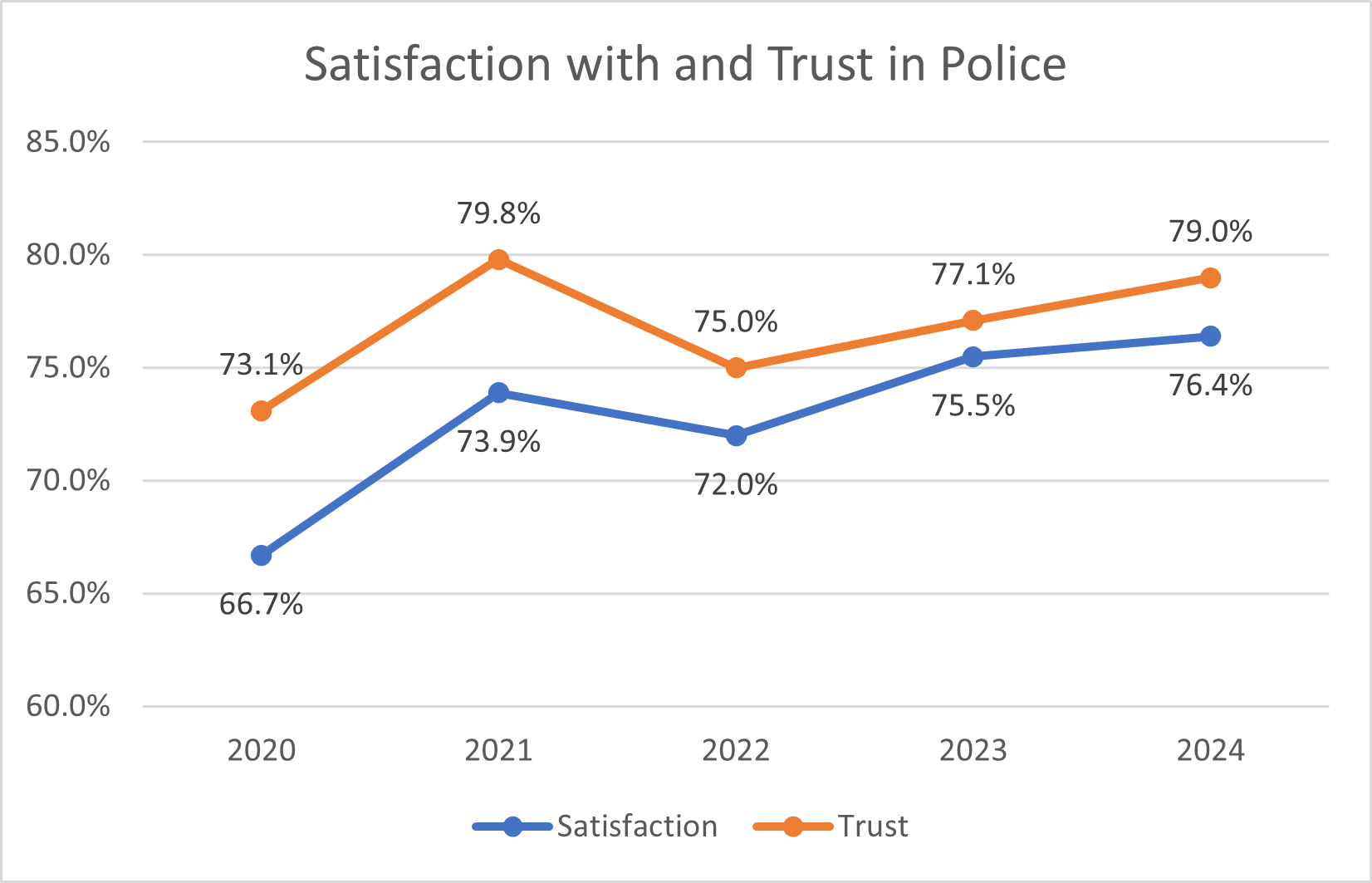
1 This comparison over time was done with the original weighting procedure (without education) in order to be consistent with the previous years’ weighting.
To further explore variation in attitudes towards the police, a composite scale of the two measures was created ranging from 0-6, where higher values indicated more positive attitudes (greater trust and satisfaction) towards the police. Several comparisons provide some interesting results including that the combined satisfaction-trust scale varied significantly by city. Consistent with trends from previous years, there are higher levels of satisfaction and trust in the wealthier and less demographically diverse cities of Virginia Beach (80.5% satisfied and 82.5% trust) and Chesapeake (83.0% satisfied and 85.0% trust) and less trust/satisfaction for the police in the less wealthy and more racially diverse cities such as Newport News, Norfolk and Portsmouth (66.7% satisfied and 74.1% trust).
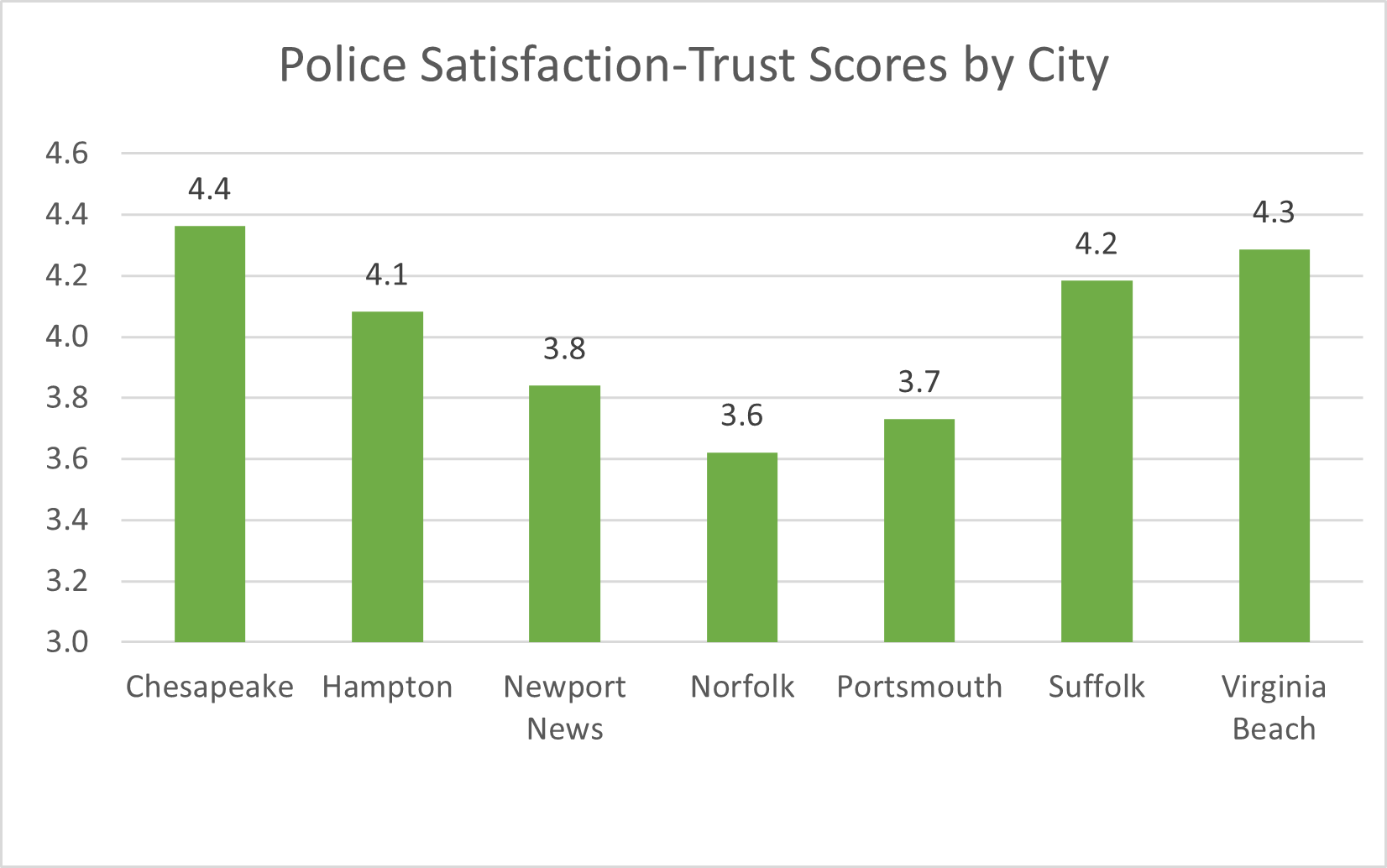
Previous findings from the Life in Hampton Roads survey and other research nationwide show that persons of color are less satisfied with and trusting of the police than are whites. This year’s survey continues to show that persons of color are less satisfied and trusting of the police than are whites. More detailed data show that 85.5% of whites are either somewhat or very satisfied with the police. Alternatively, only about three-quarters of black and other respondents report being satisfied or very satisfied with the police. These differences were more pronounced when examining trust in the local police. Eighty-eight percent of whites reported trusting the local police a great deal (49%) or at least somewhat (39%) while only 73% of black respondents and those of other races report trusting the police somewhat or a great deal. Focusing on the highest level of trust, nearly half of white respondents reported trusting the police a great deal (49.3%) while only 18.8% of black respondents and 26.2% of other persons of color reported that they trust the police a great deal. To be clear, the data show that a majority of persons of color report general satisfaction and trust in the police, but the differences between blacks and whites remains notable.
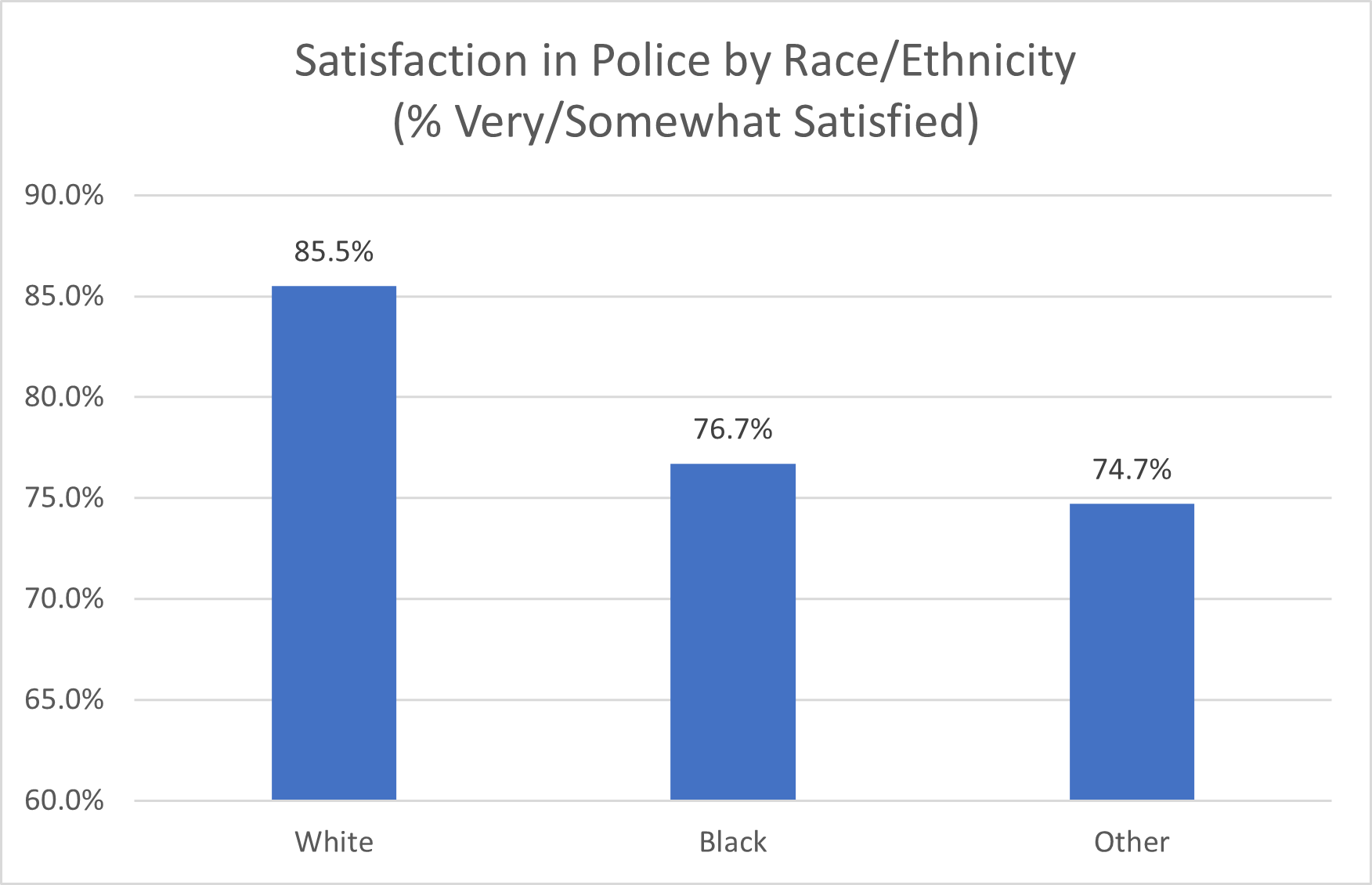
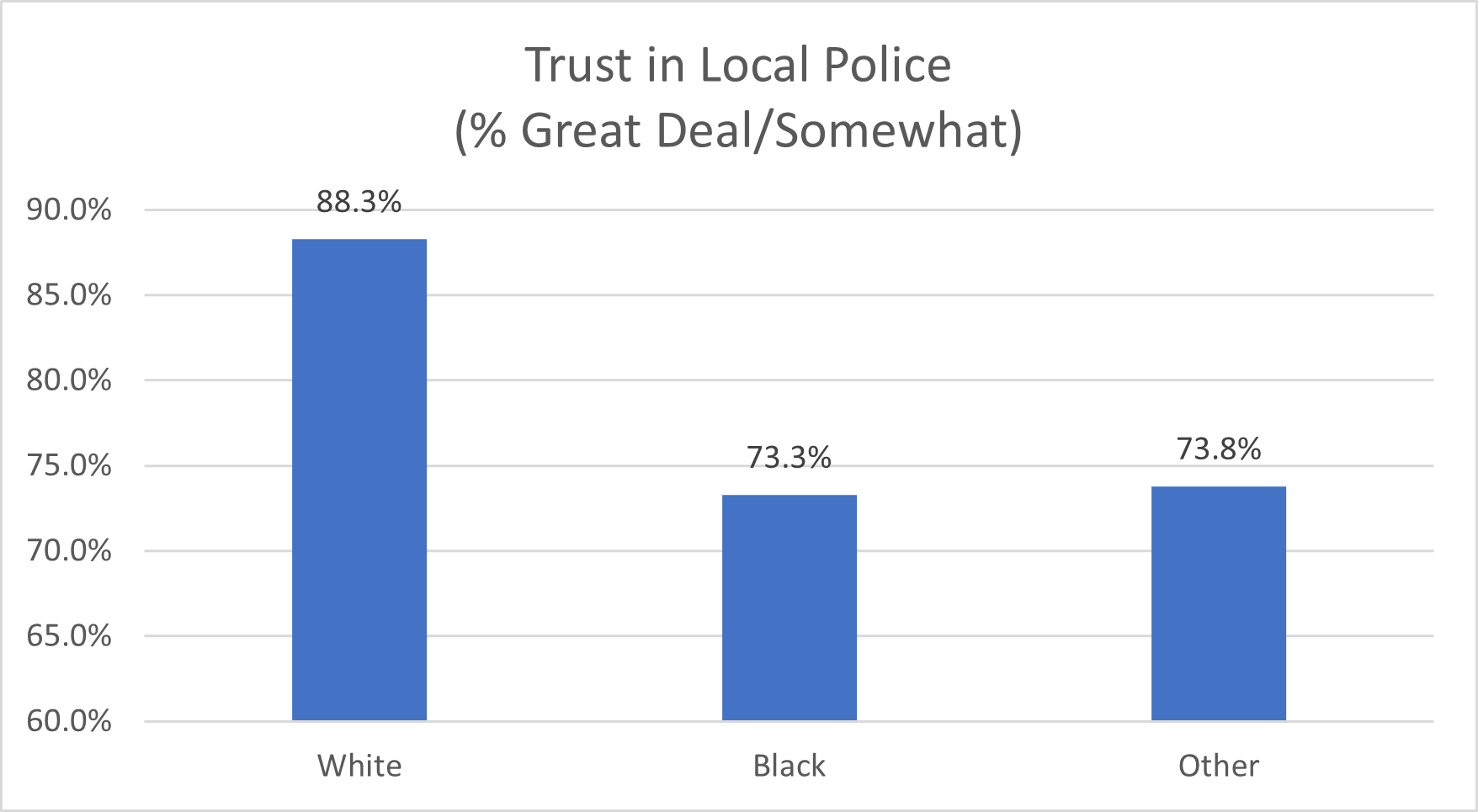
Consistent with prior years, male and female respondents held similar attitudes towards the police, but there were fairly striking differences by age of respondents with older respondents holding more positive attitudes towards the police than young respondents. The two younger age groups (ages 18-29 and 30-44) held relatively low levels of satisfaction with the police while those in the 45-64 age group had more positive views and the oldest group (ages 65 and older) reported the most favorable perceptions of the police.
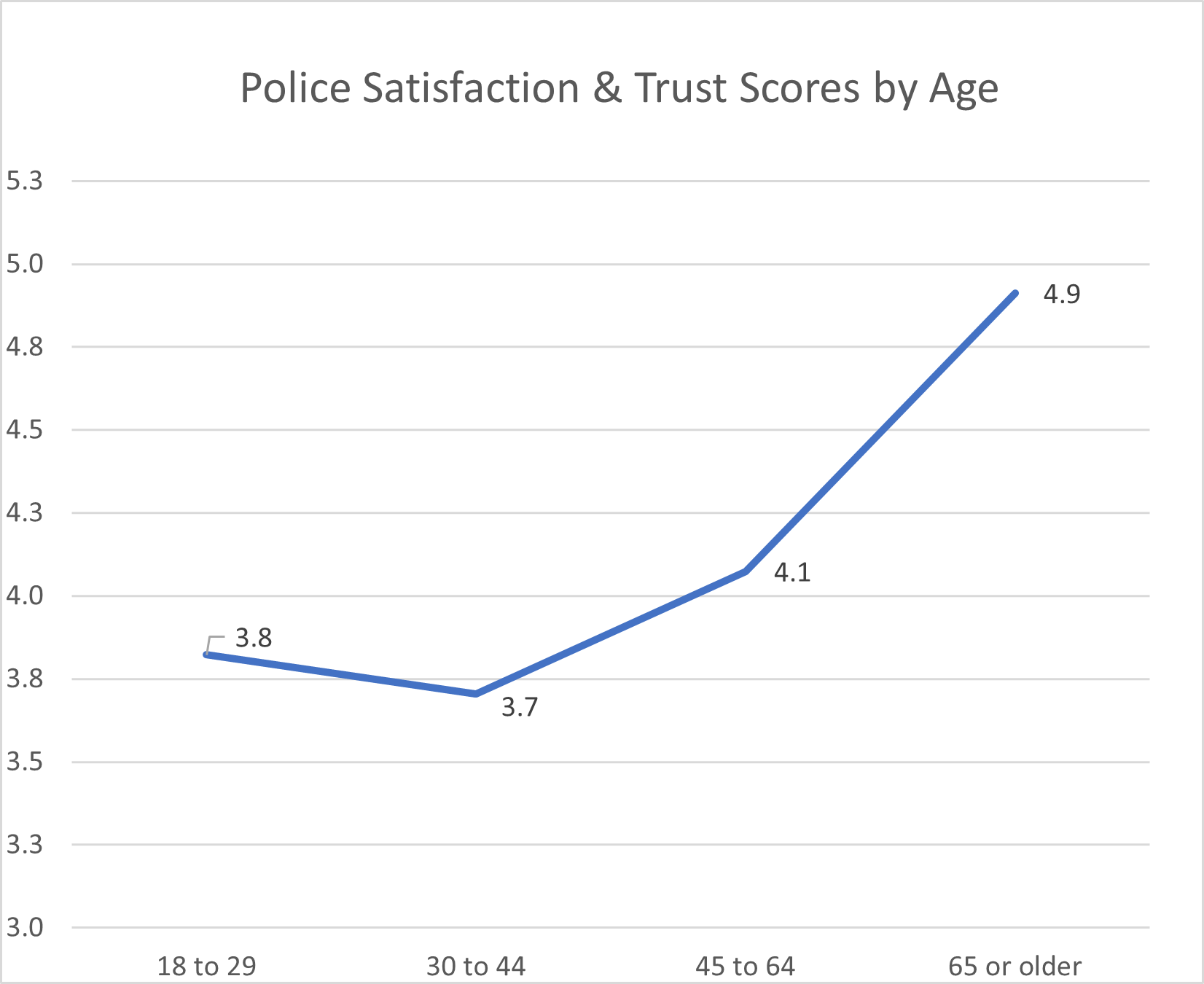
Respondents were asked to what extent they favored combining various services among the cities in Hampton Roads. There was significant variation between cities in terms of combining police services. Only in Suffolk did more than half of respondents (58.5%) favor or very much favor combining police services. Respondents from Portsmouth (41.9%) and Hampton (37.1%) were more likely to support combining police services than those living in Virginia Beach (30.8%), Norfolk (29.9%), or Chesapeake (25.5%). Newport News had the lowest percentage of respondents in favor of combining police services (22.5%).
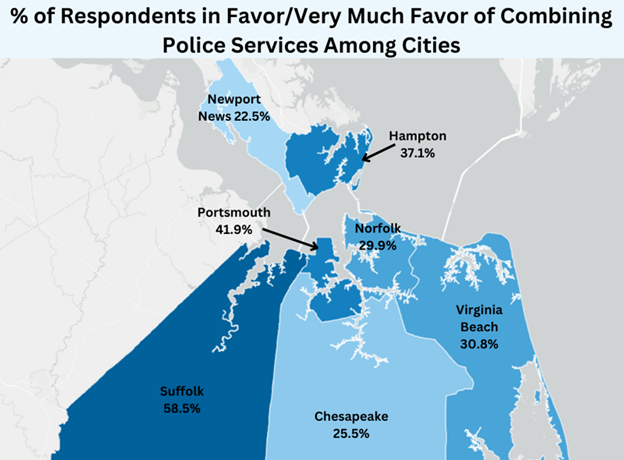
Respondents were asked: To what extent you perceive crime and drugs to be a problem in your city? The most frequent response (36.4%) was “a moderate problem” and 29.4% rated crime and drugs to be a great problem (17.4%) or a very great problem (12%). Overall, almost two-thirds (65.8%) of respondents rated crime and drugs to be at least a moderate problem.
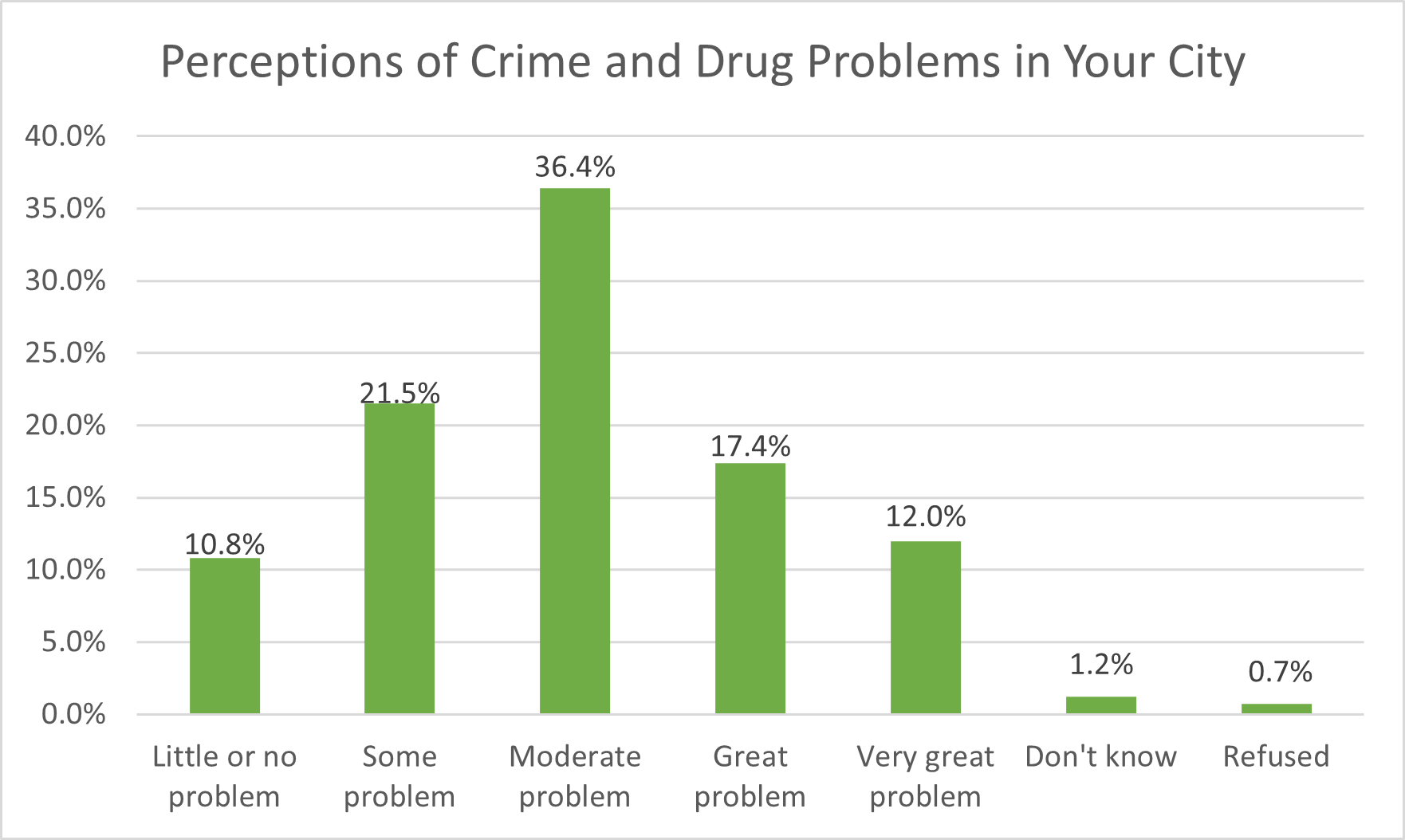
Because the question asked about crime in one’s city, we examined variation in these perceptions across cities. There was significant variation across cities in the percentage of residents reporting that crime and drugs were a great or very great problem in their city. Concern about crime and drugs was highest in Portsmouth (37.2%), which was more than twice as high as in Hampton (16.1%) and Newport News (16.1%). Perceptions of crime and drugs as a great or very great problem did not reach double digits in Virginia Beach (9.4%), Norfolk (9.3%) and Chesapeake (7.5%). Only one person out of forty (2.5%) rated crime and drugs as a great or very great problem in Suffolk.
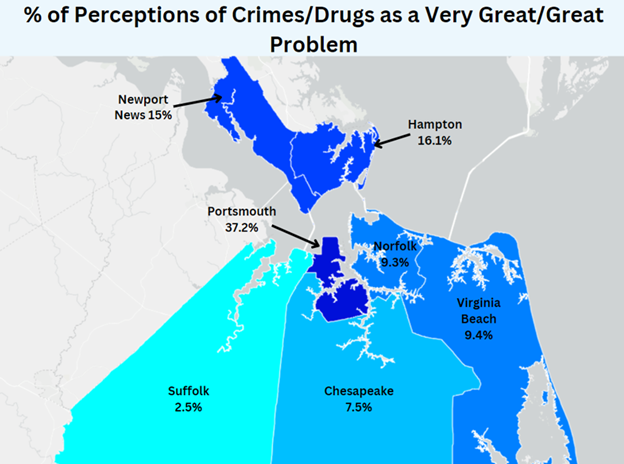
There were three survey questions measuring respondents fear of victimization. Specifically, the survey asked how afraid respondents were of: 1) having your home broken into while you are at home, 2) being robbed or mugged on the street, and 3) being physically assaulted. These are all serious crimes with the latter two involving very direct person-to-person crime potentially resulting in injury or even death. About 8% of respondents report being afraid a great deal of being burglarized while at home, 9.5% fear being robbed or mugged a great deal and 10.6% report a great deal of fear of being physically assaulted. When combining the “great deal” and “somewhat categories,” more than two-thirds of respondents fear being robbed or mugged on the street (37.1%) and being physically assaulted (35.4%).
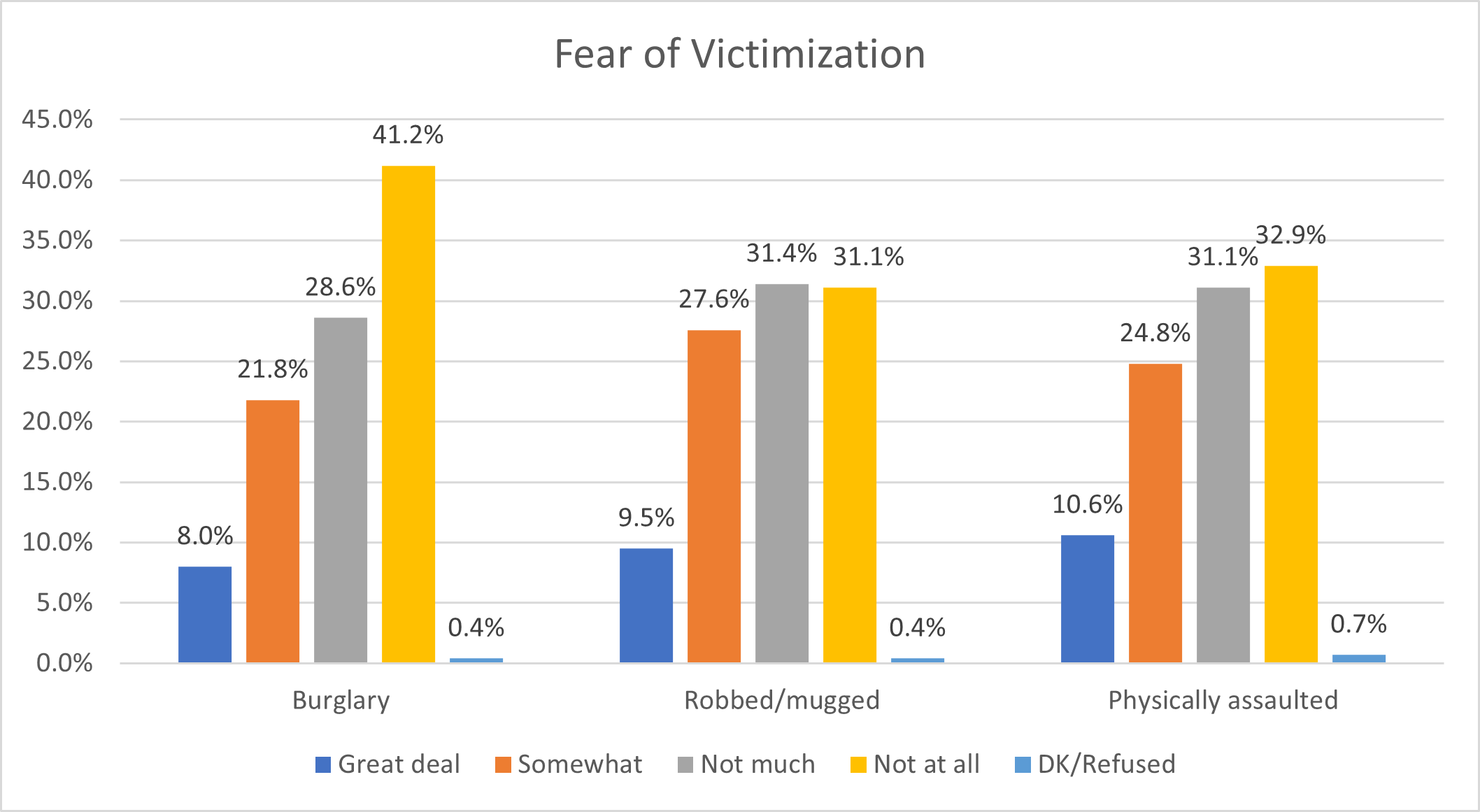
The fear of crime questions were previously asked in 2019 and the figure below shows that fear levels have increased slightly when focusing on fearing victimization “a great deal” or “somewhat.” Fear of burglary increased by 3.5%, robbery/mugging increased 7.1% and physical assault increased 8.4%2.
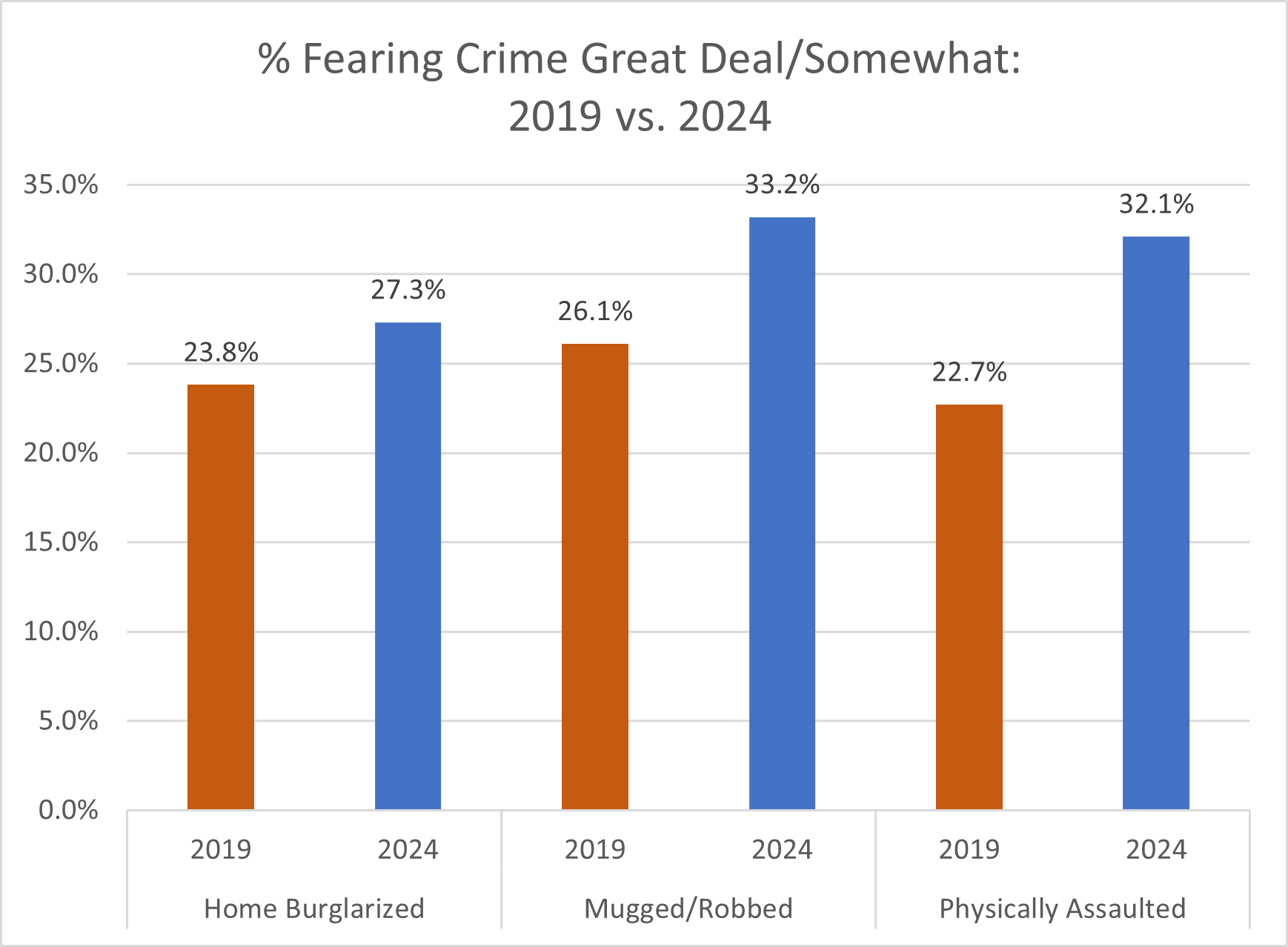
The three fear items are highly correlated and form a reliable scale ranging from 0-9 with higher values indicating higher levels of fear. That scale is used to further examine how fear of crime varies across cities and across several demographic measures. Fear of crime varied significantly by city and, to some extent, reflect the earlier examination of perceived crime and drug problems in one’s city. Clearly, residents of Chesapeake, Hampton, Suffolk and Virginia Beach report lower levels of fear of crime than in the other cities (mean values 3.0 or slightly lower). Newport News and Norfolk residents reported somewhat higher levels of fear while residents of Portsmouth were most fearful.
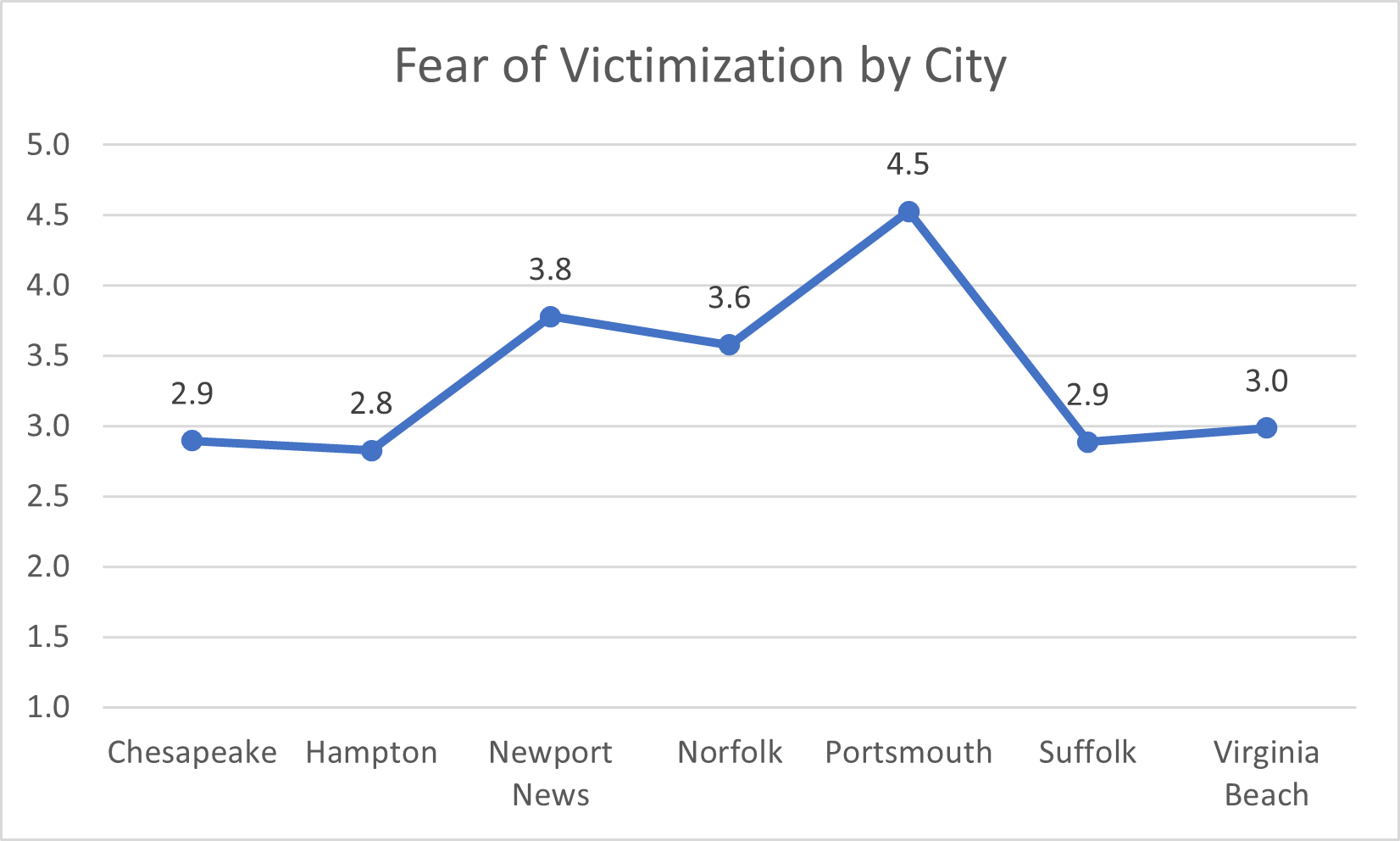
One of the most consistent findings in the research literature is that females report higher levels of fear than males. That was true in 2019 and remained true for respondents in 20243.
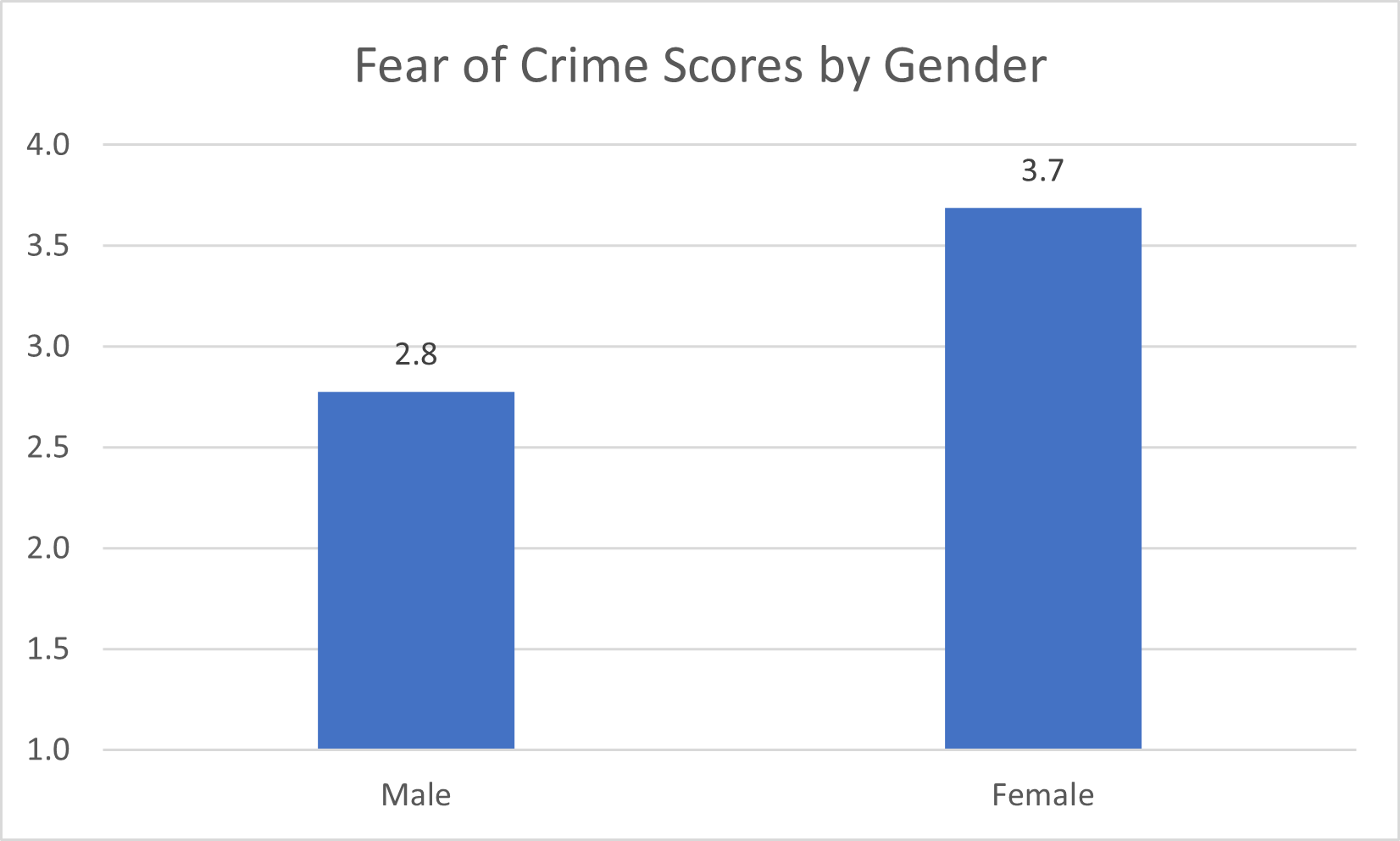
The relationship between fear of crime and race/ethnicity is more complex and appears to vary considerably across studies. In 2024, white respondents reported significantly higher levels of fear of crime than blacks or person of other racial backgrounds.
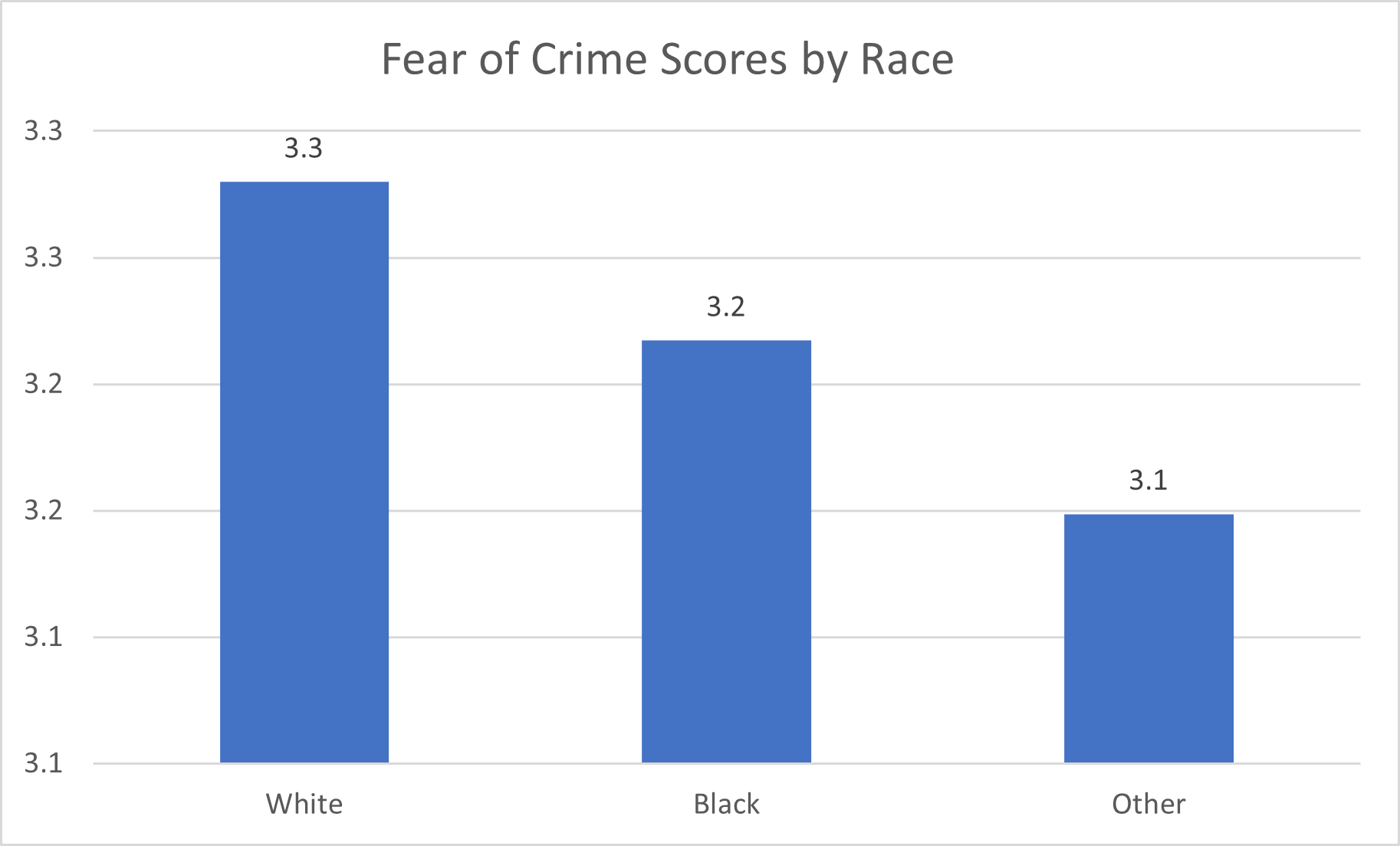
In general, wealth is associated with living in safer neighborhoods, lower levels of victimization, and levels of fear. In the 2019 survey, the relationship between household income and fear was not statistically different but did show lower levels of fear particularly among those households with incomes over $75,000. In Hampton Roads, the data showed that persons reporting higher levels of household income report significantly lower levels of fear4.
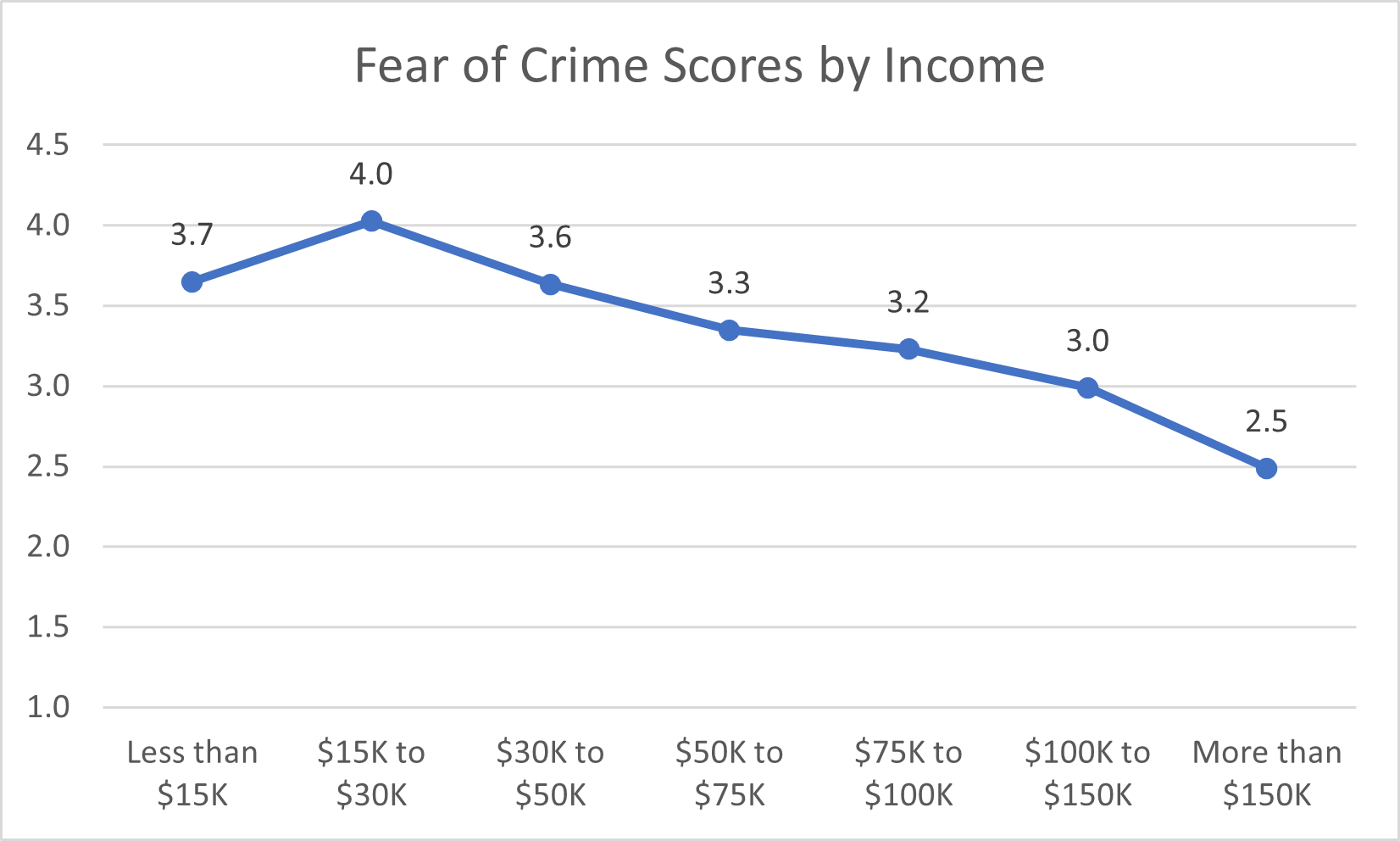
2 This comparison over time was done with the original weighting procedure (without education) in order to be consistent with the previous year’s weighting.
3 See: Saad, L. (2023, November 16). Personal safety fears at three-decade high in U.S. Gallup. https://news.gallup.com/poll/544415/personal-safety-fears-three-decade-…
4 See: Saad, L. (2023, November 16). Personal safety fears at three-decade high in U.S. Gallup. https://news.gallup.com/poll/544415/personal-safety-fears-three-decade-…


